Showing Spotlights 825 - 832 of 2785 in category All (newest first):
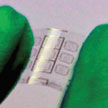 Inspired by the unique optical and electronic property of graphene, two-dimensional layered materials - as well as their hybrids - have been intensively investigated in recent years, driven by their potential applications for nanoelectronics. The broad spectrum of atomic layered crystals includes transition metal dichalcogenides (TMDs), semiconducting dichalcogenides, monoatomic buckled crystals, such as black phosphorous (BP), and diatomic hexagonal boron nitride, etc. Tihis article examines the recent advancement of flexible 2D electronic devices based on TMDs and BP.
Inspired by the unique optical and electronic property of graphene, two-dimensional layered materials - as well as their hybrids - have been intensively investigated in recent years, driven by their potential applications for nanoelectronics. The broad spectrum of atomic layered crystals includes transition metal dichalcogenides (TMDs), semiconducting dichalcogenides, monoatomic buckled crystals, such as black phosphorous (BP), and diatomic hexagonal boron nitride, etc. Tihis article examines the recent advancement of flexible 2D electronic devices based on TMDs and BP.
May 23rd, 2017
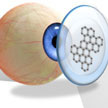 Several research projects are working on reinventing the contact lens as a smart electronic device that, for instance, works as a self-powered biosensor for various point-of-care monitoring and wireless biomedical sensing. n addition to sensors, researchers are devising numerous applications for smart contact lenses, ranging from drug delivery systems to protection from electromagnetic wave damage. An application closer to contact lenses' original function, graphene can change the focal length of a polymeric soft contact lens in order to adjust near- and farsightedness.
Several research projects are working on reinventing the contact lens as a smart electronic device that, for instance, works as a self-powered biosensor for various point-of-care monitoring and wireless biomedical sensing. n addition to sensors, researchers are devising numerous applications for smart contact lenses, ranging from drug delivery systems to protection from electromagnetic wave damage. An application closer to contact lenses' original function, graphene can change the focal length of a polymeric soft contact lens in order to adjust near- and farsightedness.
May 22nd, 2017
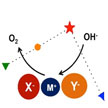 Researchers have proposed and proved an innovative strategy of anionic regulation. The construction of active sites with intrinsic oxygen evolution reaction (OER) is of great significance to overcome the limited efficiency of abundant sustainable energy devices such as fuel cells, rechargeable metal-air batteries, and in water splitting. Anionic regulation of electrocatalysts by modulating the electronic structure of active sites significantly promotes OER performance.
Researchers have proposed and proved an innovative strategy of anionic regulation. The construction of active sites with intrinsic oxygen evolution reaction (OER) is of great significance to overcome the limited efficiency of abundant sustainable energy devices such as fuel cells, rechargeable metal-air batteries, and in water splitting. Anionic regulation of electrocatalysts by modulating the electronic structure of active sites significantly promotes OER performance.
May 18th, 2017
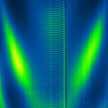 Access to accurate surface energy values of graphene is not only of fundamental interest, but provides a useful reference for anyone involved in research on graphene properties, (surface) modifications, and the implementation of graphene in devices. New research demonstrates the successful application of the graphene surface force balance (g-SFB) to directly measure the surface energy of pure graphene. This work is of fundamental interest to a broad community and will aid the advancement of fundamental measurements of 2D and other nanomaterials.
Access to accurate surface energy values of graphene is not only of fundamental interest, but provides a useful reference for anyone involved in research on graphene properties, (surface) modifications, and the implementation of graphene in devices. New research demonstrates the successful application of the graphene surface force balance (g-SFB) to directly measure the surface energy of pure graphene. This work is of fundamental interest to a broad community and will aid the advancement of fundamental measurements of 2D and other nanomaterials.
May 17th, 2017
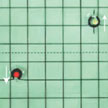 A recent review article highlights the role of electrochemistry in synthesizing materials for self-powered micro- and nanodevices; the aspect of charge transfer and changes in electrochemical potentials for locomotion; control of self-propelled motion using electrochemistry and electric fields; and possible applications in electrochemical sensing and energy generation using micro- and nanoscale motion. The authors discuss various electrochemical techniques, which allow for the fabrication of large amounts of micro/nanorobots from diverse materials, with and without the use of templates.
A recent review article highlights the role of electrochemistry in synthesizing materials for self-powered micro- and nanodevices; the aspect of charge transfer and changes in electrochemical potentials for locomotion; control of self-propelled motion using electrochemistry and electric fields; and possible applications in electrochemical sensing and energy generation using micro- and nanoscale motion. The authors discuss various electrochemical techniques, which allow for the fabrication of large amounts of micro/nanorobots from diverse materials, with and without the use of templates.
May 16th, 2017
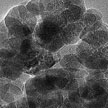 Supercapacitors, a rapidly emerging type of energy storage device, hold great potential due to their interesting characteristics: high power density, fast charge and discharge rates, and long-term cycling life. However, the use of supercapacitors is severely limited by their low energy density, which is one to two magnitudes lower in comparison with Li-ion batteries. In new work, researchers have developed a low-crystalline FeOOH nanoparticle anode with excellent comprehensive electrochemical performances at both low and high mass loadings as potential replacements for carbon negative electrodes in full supercapacitor devices.
Supercapacitors, a rapidly emerging type of energy storage device, hold great potential due to their interesting characteristics: high power density, fast charge and discharge rates, and long-term cycling life. However, the use of supercapacitors is severely limited by their low energy density, which is one to two magnitudes lower in comparison with Li-ion batteries. In new work, researchers have developed a low-crystalline FeOOH nanoparticle anode with excellent comprehensive electrochemical performances at both low and high mass loadings as potential replacements for carbon negative electrodes in full supercapacitor devices.
May 15th, 2017
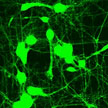 Growing neurons outside the brain but with predictable synaptic connectivity between other neurons could provide for an efficient platform for fundamental research and design of neuroprosthetics. Various neuromorphic engineering research efforts are underway to do this. A team now has built a Brain-on-a-chip where they demonstrated guided growth of neurons on semiconductor nanowire scaffolds. Providing an environment were scientists could study a less complex neuronal circuit as opposed to a fully functioning circuit in a living mammalian brain will open up a new experimental paradigm of understanding how the neurons are influenced by the mechanical properties of the brain as they grow and form circuits.
Growing neurons outside the brain but with predictable synaptic connectivity between other neurons could provide for an efficient platform for fundamental research and design of neuroprosthetics. Various neuromorphic engineering research efforts are underway to do this. A team now has built a Brain-on-a-chip where they demonstrated guided growth of neurons on semiconductor nanowire scaffolds. Providing an environment were scientists could study a less complex neuronal circuit as opposed to a fully functioning circuit in a living mammalian brain will open up a new experimental paradigm of understanding how the neurons are influenced by the mechanical properties of the brain as they grow and form circuits.
May 12th, 2017
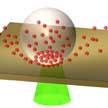 The use of quantum dots (QDs) in practical applications relies on the ability to precisely pattern QDs on substrates with desired optical properties. Typical direct-write printing techniques such as inkjet and gravure printing are limited in resolution (micron-scale), structural complexity, and require significant post-processing time. In new work, researchers use laser-induced bubble printing to pattern CdSe/CdS QDs on plasmonic substrates with submicron resolution, high throughput, and strong QD-substrate adhesion.
The use of quantum dots (QDs) in practical applications relies on the ability to precisely pattern QDs on substrates with desired optical properties. Typical direct-write printing techniques such as inkjet and gravure printing are limited in resolution (micron-scale), structural complexity, and require significant post-processing time. In new work, researchers use laser-induced bubble printing to pattern CdSe/CdS QDs on plasmonic substrates with submicron resolution, high throughput, and strong QD-substrate adhesion.
May 11th, 2017
 Inspired by the unique optical and electronic property of graphene, two-dimensional layered materials - as well as their hybrids - have been intensively investigated in recent years, driven by their potential applications for nanoelectronics. The broad spectrum of atomic layered crystals includes transition metal dichalcogenides (TMDs), semiconducting dichalcogenides, monoatomic buckled crystals, such as black phosphorous (BP), and diatomic hexagonal boron nitride, etc. Tihis article examines the recent advancement of flexible 2D electronic devices based on TMDs and BP.
Inspired by the unique optical and electronic property of graphene, two-dimensional layered materials - as well as their hybrids - have been intensively investigated in recent years, driven by their potential applications for nanoelectronics. The broad spectrum of atomic layered crystals includes transition metal dichalcogenides (TMDs), semiconducting dichalcogenides, monoatomic buckled crystals, such as black phosphorous (BP), and diatomic hexagonal boron nitride, etc. Tihis article examines the recent advancement of flexible 2D electronic devices based on TMDs and BP.
 Subscribe to our Nanotechnology Spotlight feed
Subscribe to our Nanotechnology Spotlight feed





